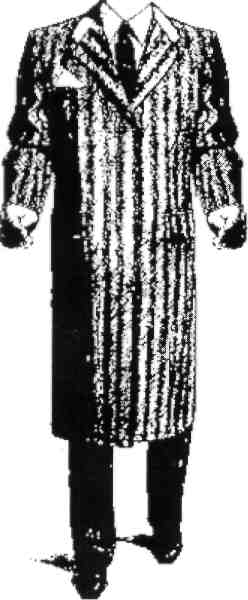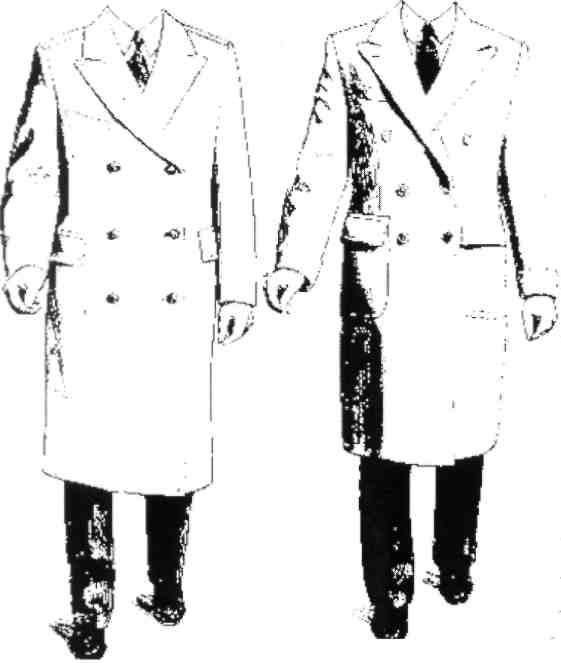
- •Шахты 2012
- •Содержание
- •Предисловие
- •Lesson One. Clothing and Textile Materials
- •Text a. Origin and Functions of Clothing
- •Vocabulary
- •Exercise 7. Say what you have learned from the text about:
- •Text b. Clothing, Costume and Dress
- •Vocabulary
- •Exercise 8. Read the text “Clothing, Costume and Dress” and translate in into Russian. Exercise 9. Fill in the blanks with the English equivalents of the Russian “платье”, “одежда”:
- •Distinctions among Clothing, Costume and Dress
- •Vocabulary
- •Lesson Two. Men’s and Women’s Clothing
- •Vocabulary
- •Text b. Caftan and Coat
- •Exercise 6. Read the text “Caftan and Coat” and think over the answers to the questions.
- •Vocabulary
- •Exercise 7. Complete the sentences using the text:
- •Exercise 8. Translate the reading selection given below. Reproduce the coloured version of the styles described.
- •Exercise 9. Say what you have learnt from the text about
- •Vocabulary
- •Lesson Three. Styles, Details and Silhouettes
- •Text a. Jacket Styles
- •Vocabulary
- •Text b. Parts of a Suit
- •Vocabulary
- •Exercise 7. Decide if the following statements are true or false.
- •Exercise 8. Look through the fashion magazines and watch tv programmes to describe updated suit styles offered by designers and worn by famous people (businessmen, politicians and so on).
- •Text c. Types of Fashion Silhouettes
- •Vocabulary
- •Lesson Four. Parts of Clothes
- •Text a. Sleeve Styles for Women’s Clothes
- •Vocabulary
- •Exercise 1. Read the text «Sleeve Styles for Women’s Clothes” to find the answers to the questions.
- •Exercise 2. Find and translate the sentences in which the following words are used. Determine what part of speech they belong to.
- •Exercise 3. Read the text once more for better understanding. Match the following descriptions 1-5 with the type of sleeve (a-e).
- •Exercise 4. Decide whether these sentences are true or false.
- •Exercise 5. Put the following words in order to make some questions for your partner.
- •Text b. Garments and their Parts
- •Vocabulary
- •Lesson Five. History of Garment Construction
- •Text a. Garment Construction
- •Vocabulary
- •Text b. Garment Construction
- •Vocabulary
- •Text c. History of Clothes and Design
- •Lesson Six. Clothes Design
- •Text a. Fashion Design
- •Vocabulary
- •Text b. Types of Fashion
- •Vocabulary
- •Vocabulary
- •Exercise 8. Read the text (several times) to better understand its contents. Answer the questions.
- •Lesson Seven. Elements and Types of Design
- •Text a. Elements of Design: Line and Form
- •Vocabulary
- •Text b. Elements of Design: Shapes
- •Vocabulary
- •Exercise 5. Return to the text “Elements of Design: Shapes” to decide whether the following statements are true or false.
- •Exercise 6. Translate the sentences paying attention to the word “one”.
- •Exercise 7. Choose the correct answer to match the shape of the garment and its description.
- •Text c. Elements and Types of Design
- •Text a. Fabric Trimmings
- •Vocabulary
- •Exercise 1. Return to the text “Trimmings” to answer the questions.
- •Exercise 2. Translate in writing the sentences with modal verbs can, may, must from the text. Exercise 3. Read the following sentences and translate them into Russian. Pay attention to the word wear.
- •Exercise 4. Read the dialogues and retell them in indirect speech.
- •Text b. Fashion Accessories
- •Vocabulary
- •Lesson Nine. Clothes and Technological Advances
- •Text a. Innovative Clothes
- •Vocabulary
- •Exercise 3. Translate the sentences with the infinitive constructions from a) into Russian and from b) into English.
- •Exercise 4. Write the summary of the text and reproduce it orally. Text b. Innovations in Fashion Design and Garment Production
- •Vocabulary
- •Exercise 5. Read the text “Innovations in Garment Production” several times to better understand its contents. Answer the questions.
- •Exercise 6. Find the English equivalents in the text:
- •Vocabulary
- •Lesson Ten
- •Text a. Techno Material
- •Vocabulary
- •Exercise 1. Return to the text “Techno Materials” to read it more attentively and answer the questions.
- •Exercise 2. Translate the sentences paying attention to the words with -ing.
- •Exercise 3. Write the summary of the text. Text b. Innovative Textiles
- •Vocabulary
- •Exercise 4. Read the text “Innovative Textiles” several times to better understand its contents. Exercise 5. Translate the words of the same root. State to what part of speech they belong:
- •Exercise 6. Rearrange the sentences to correspond the contents of the text.
- •Библиографический список
Exercise 7. Complete the sentences using the text:
Caftan is (длинная одежда с застежкой на пуговицы спереди) worn by both men and women.
(В зависимости от назначения), caftans vary from hip to floor length.
In Ottoman Empire caftans made of rich satins and velvets of silk were worn (придворными, чтобы показать статус владельцев)
Coat is (предмет верхней одежды с рукавами и застежкой спереди) of various styles and shapes.
As the garment is designed to be worn outdoors to protect the wearer from the environment (она немного длиннее и шире обычных вещей в гардеробе).
Coats may be cut from (кашемира, твида, меха, габардина или хлопка)
Exercise 8. Translate the reading selection given below. Reproduce the coloured version of the styles described.


Topcoat Overcoat
New words: navy blue – темно-синий; charcoal – угольный; layer – слой, herringbone – в «елочку»; fawn – желтовато-коричневый; shoulder – плечо; fur – мех.
Popular styles of overcoats named for the nineteenth-century Earl of Chesterfield may look in the following way.
Chesterfield in navy blue or charcoal grey with or without a velvet collar;
a single- or double-breasted navy or grey herringbone overcoat;
a fawn-coloured double-breasted British warmer;
The best choice for the evening wear is a Chesterfield overcoat of black wool with a black velvet collar, or a dark tweed with a fur collar. One ought to remember that double-breasted coats tend to be warmer because of the second layer of material that crosses the front of the coat. There are also some handsome coats with raglan-shouldered sleeves.
Exercise 9. Say what you have learnt from the text about
the origin of the caftan
the cut of the caftans
textiles used for making caftans
coat as an outerwear garment
Text C. Business and Tailored Suits
The suit is the traditional form of men’s formal clothes in the Western world. The modern suit appeared in the early 19th century but the coat’s origins trace to the simplified standard of dress established by the British king Charles II who appeared in a knee-length coat, vest (waistcoat), and breeches on the restoration of the British throne in 1660.
For some four hundred years, suits of matching coat, trousers and waistcoat have been in and out of fashion.
Today the man’s business suit is an emblem of official power and professional identity, suggesting a life free from physical toil.
The double-breasted suit was a major style of dress prior to World War II and then from the mid 1980s until the mid 1990s. It has two parallel rows of buttons and peaked lapels. Traditionally, each lapel took a buttonhole (in Europe they have dropped the right buttonhole). The double-breasted jacket should be double-vented, though a non-vented jacket is also proper. There is only one principle governing the selection of fine suit material: the cloth must be made from natural fibres. Worsted, gabardine, flannel are good for cooler periods, then linen, cotton, or silk in the summer.
The tailored suit is a garment for women consisting of a jacket and a skirt, most often made of the same fabric. This name for the garment appeared in the fashion press around 1885. The first suits were marked by the English influence that predominated in the late nineteenth century. British women, who launched the craze for sports, travel, and tourism, were the first to adopt them. These first tailored suits had jackets whose cut and details were borrowed from men’s clothing. Skirts were slit or made with wide pleats in order to facilitate walking. Suits were worn with such accessories as vests, shirts with wing collars and men’s hats. Later, under the influence of sports, their form became more flexible: skirts flared, jackets became less fitted.
In the 20th century the tailored suit became the uniform of the middle classes-office workers, school teachers, businesswomen, etc.
